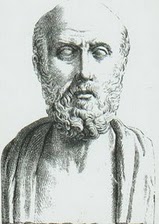
Researchers in Egypt say a non-invasive type of brain stimulation involving magnets could be a useful treatment for patients partially paralyzed by stroke.
Repetitive transcranial magnetic stimulation (rTMS) is mostly used for depression, with some studies finding it to be a beneficial treatment and others showing little benefit.
The technique involves the use of electromagnets positioned strategically on the head to create a magnetic field that sends tiny electric currents into the brain.
The study is among the first to examine rTMS as a treatment for ischemic stroke-related weakness.
Sixty patients with mild to moderate muscle weakness on one side of the body were recruited for the study within one- to 36-months after having strokes.
Twenty patients had high frequency (5-Hz daily) rTMS sessions for 10 consecutive days, while 20 others had 10 daily treatments at a lower frequency (1-Hz daily). An additional 20 patients unknowingly received sham treatments with no brain stimulation. All 60 patients received the same physical therapy, which included rehabilitation sessions developed by the researchers to stimulate hand movement.
Patient improvement was recorded over 12 weeks. The researchers used several accepted measures of stroke improvement, including a standardized test known as the thumb-index finger-tapping test.
Both of the rTMS treatment groups showed statistically significant improvement in finger-tapping ability over the course of the observation period, but no improvement was seen in the sham-treatment group.
Researcher Anwar Etribi, who is emeritus professor of neurology at Cairo's Ain Shams University, says the treatment may work by restoring balance to the brain.
"We believe that people develop partial paralysis down one side after they have a stroke because the hemispheres of the brain become unbalanced," Etribi explains in a news release. "The hemisphere that has not been affected can become overactive, while the damaged hemisphere can become inhibited."
Close to 800,000 people in the U.S. have strokes each year. Nine out of 10 of these are ischemic strokes, which occur when blood vessels become blocked and deprive the brain of blood and oxygen.
Weakness is common on one or both sides of the body in people who survive strokes, and useful therapeutic approaches to help patients regain motor function are badly needed, says American Heart Association spokesman Daniel Lackland, MD.
Lackland is a professor in the department of neurosciences at the Medical University of South Carolina in Charleston.
He tells WebMD the study failed to convince him that rTMS has a place in the rehabilitation of stroke patients.
"This is a small, pilot study and the outcomes they reported were minimal," he says. "I'm not sure too many people in the field will be excited about such a complex treatment with minimal effects."
The study appears in the September issue of the European Journal of Neurology. In an email to WebMD, Etribi said the research was paid for by Ain Shams University, with no public grants or industry funding.
212.jpg)

